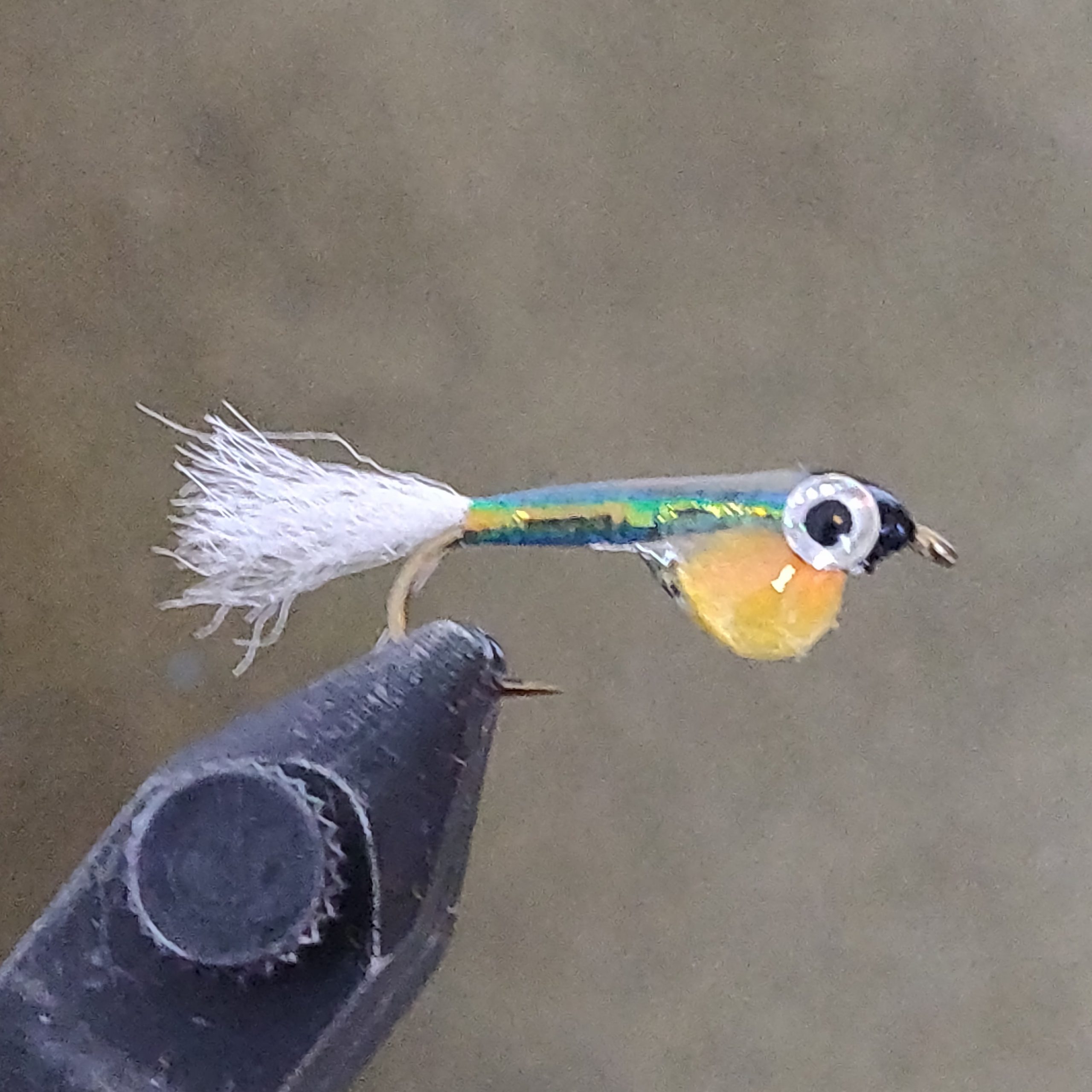This is a beautiful salmon alevin pattern designed by Matt King of Victoria BC. This fly is featured on Umpqua.com where Matt is a signature Tyer. Matt can be found on most days working the fly shop at Robinson’s Outdoor Store in Downtown Victoria.
In the Pacific Northwest, Pacific salmon spawn between the months of September through to late November. Sometimes they’ll even spawn as early as August and as late as December. The spawning salmon will create a redd by fanning was pebbles and gravel where they plan to lay their eggs. After spawning the eggs get buried in gravel, sometimes as deep as 30cm. The eggs, the first life cycle of the salmon, will remain in the gravel throughout the winter as the salmon develop within the eggs. The eggs will eye up after about a month.
Around the month of March, the salmon will break free from their egg’s soft shells while retaining their yolk. This 2nd form of the life cycle of the salmon is called Alevin. Alevin look like a very small fish a yolk sac still attached. They spend this period of their lives, about another month, hidden and swimming around within the gravel of throughout their redds. They rely entirely on their yolk sac for nutrition.
After expending the reserves of their yolks and requiring to start eating they turn into fry, the 3rd stage of the salmon life cycle, and rise out of the gravel. The fry is is the first stage where they are swimming around the waters of their native streams and rivers, exposing themselves to the predatory species found their, such as cutthroat or rainbow trout.
Just because salmon spend the first two life cycles of their lives buried in the gravel of their redds does not mean that eggs and alevins don’t find their way out of the gravel to float down stream and get predated on by trout or insects. Redds can get disturbed by a number of means, including erosion, high water events, debris tumbling downstream or even careless fisherman. Since salmon spawn in such prolific number, it’s easy to imagine that throughout the winter, it’s common for trout to make a meal of salmon eggs and alevins and around mid march fry!
Recipe
- Hook: Size 10 streamer hook
- Step 1: Tie in 2x shank length white yarn tail at the bend of the hook so half of yarn is a tail and the other half can be tyed along the shank later.
- Step 2: Tie in green/blue flash tinsel
- Step 3: Tie the white yarn along the body to the head, leaving room for the head of the fly
- Step 4: Palmer the tinsel to the head
- Step 5: Add salmon egg orange or red (chum/coho) yarn throat to imitate the yoke
- Step 6: Add Epoxy eyes
- Step 7: Use epoxy or UV cure resin to coat body and yolk.
